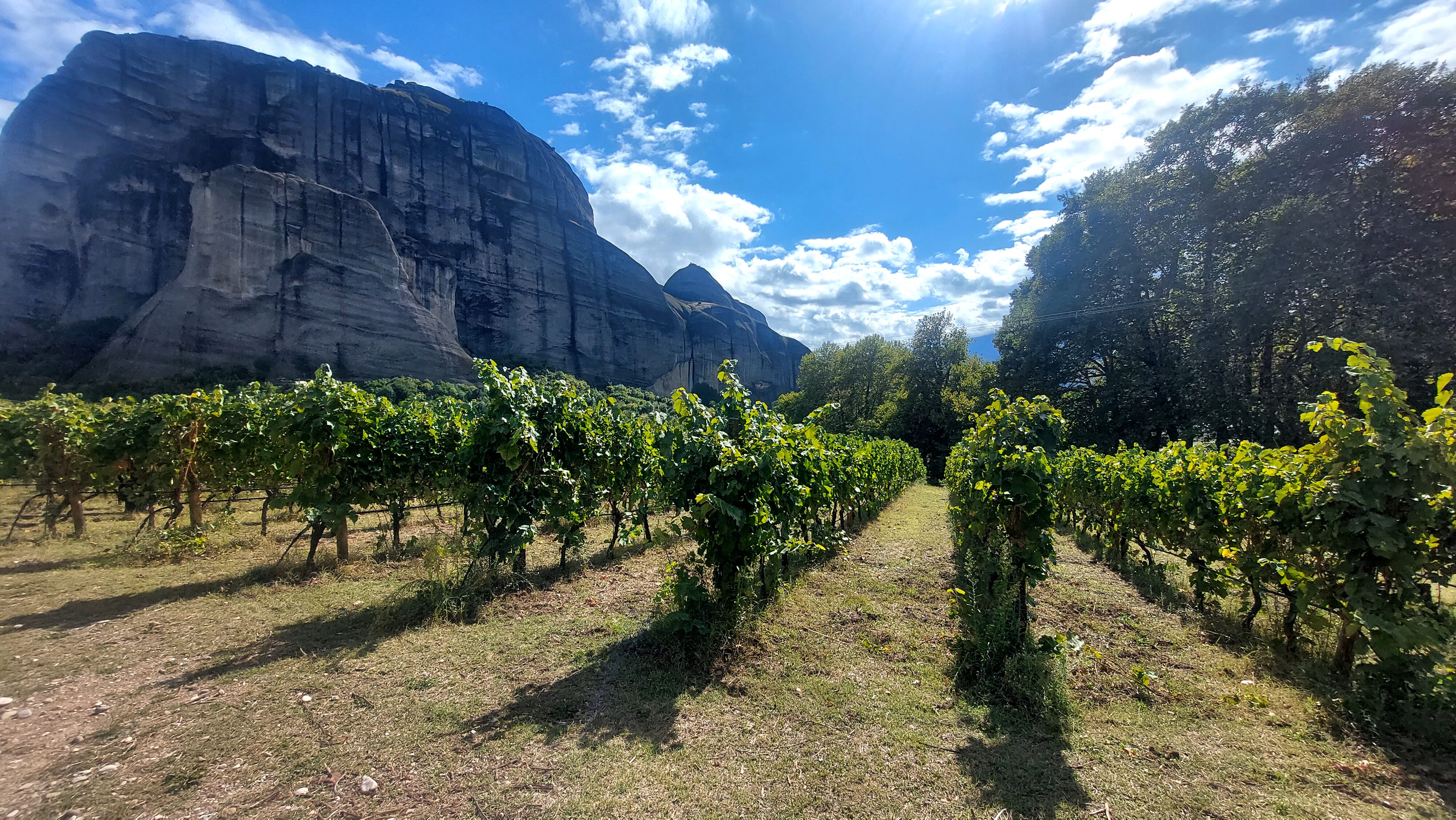From vineyard and fermentation to the still, a visit to Tsililis Distillery—where monastic tradition meets cutting-edge technology in a rare, majestic landscape.
At the edge of the Thessalian plain, the rock pillars of Meteora form a sight you never forget. Monasteries crown the cliffs, the atmosphere turns quietly mystical, and the landscape seems to balance between the tangible and the transcendent. Lower your gaze and, beneath those hovering monasteries, people tend vines and have distilled tsipouro here for centuries—tsipouro being a grape-pomace spirit, kin to grappa.
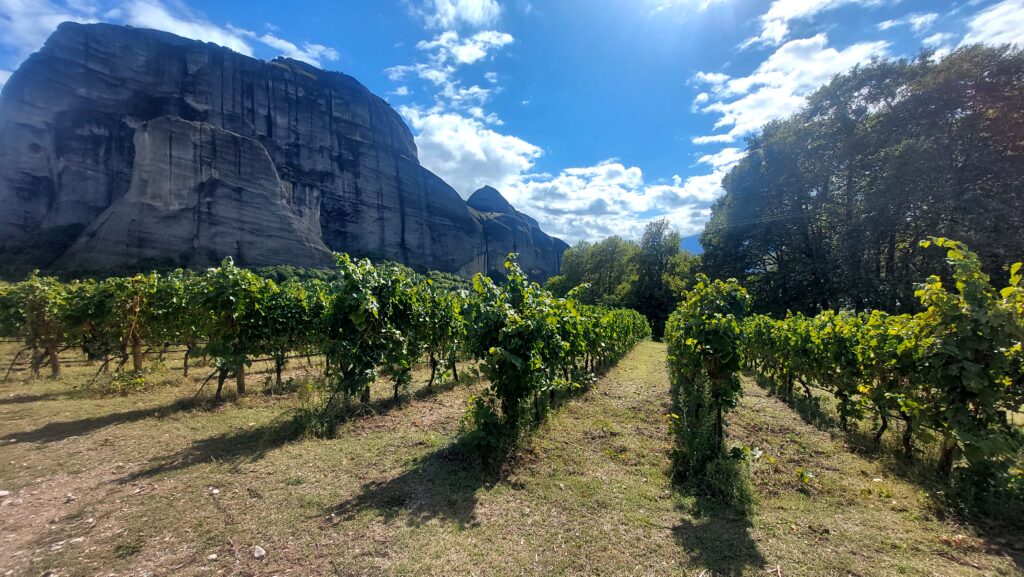
This is where our road story begins, with host Kostas Tsililis, who shared the craft in the place that “gives birth” to it.
“I grew up around the stills,” says Kostas Tsililis, now one of the defining figures of Greek distilling. “Tsipouro was the drink of hospitality—joy, dancing, family stories. When the law changed in the late ’80s and licensed distilleries were allowed to bottle, I decided to make it my work.” In 1990 he was among the first to bottle tsipouro in the area—putting it in a label without losing its soul.
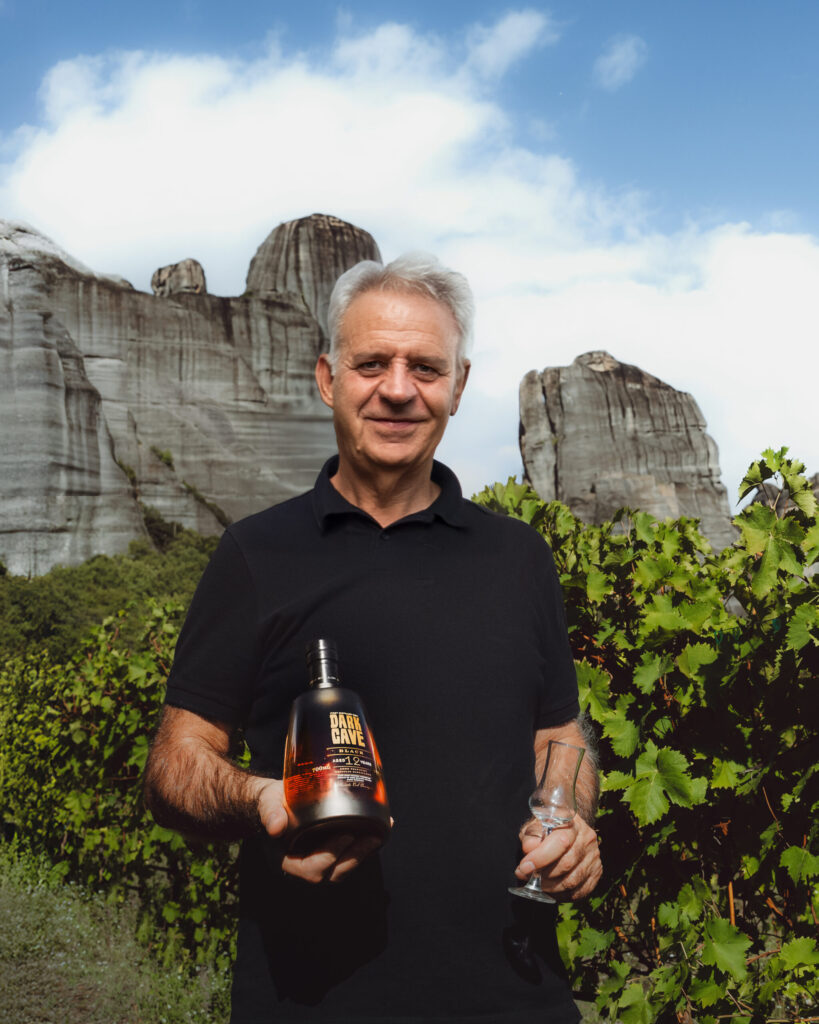
Although he studied Physics, he quickly realized teaching wasn’t his path. In 1989 he founded his first distillery, at a time when many believed “real” tsipouro had to be homemade. The market was cautious; the bottle seemed “impersonal” to some. But here, among sky-bound rocks and deep-rooted vines, the answer was simple: precision in fruit, purity in distillation, respect for tradition. The story began to be written again—this time with a label.
Stop 1: The Meteora vineyard
We arrive at a vineyard in the shadow of the Great Meteoron. Sunlight floods the rows; the lines point to the rock as if drawing paths up the slope. A cool draft slides down from Pindos and lifts the leaves; above, the monastery looks suspended from the sky.
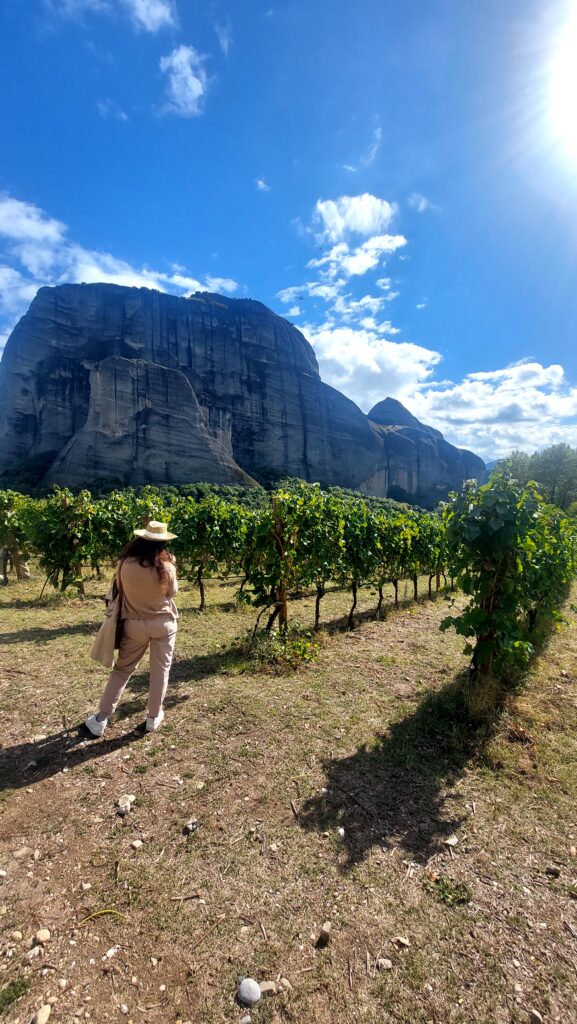
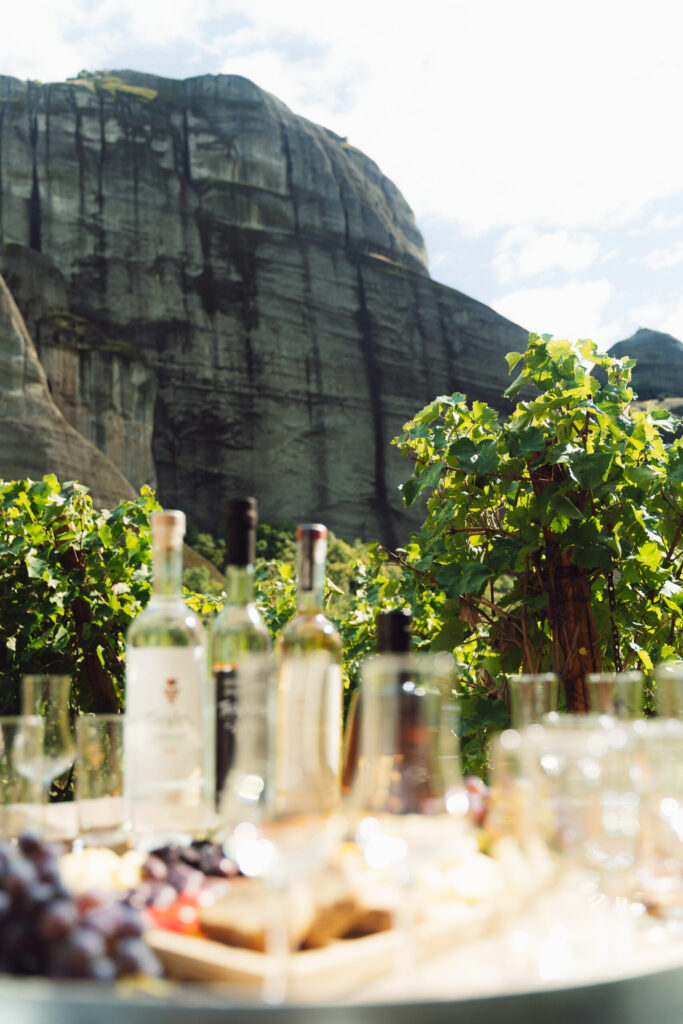
This vineyard—within a designated archaeological zone—benefits from strong diurnal swings, giving clean aromas, slow ripening, and bright acidity. “I don’t know if it’s the most beautiful vineyard in Greece,” Tsililis smiles, “but it’s certainly the most photographed.” The plot belongs to the Monastery of Great Meteoron, which also keeps a cellar-museum of old tools and barrels—a living bridge between monastic life and vine growing. In 2013, Tsililis began reviving the vineyard at the rock’s base, cultivating several varieties that allow both single-varietal distillations and nuanced blends.
Stop 2: Damasio — fruit, hands, rhythm
In Damasio (Tyrnavos), the new distillation site stands exactly where it should: next to the fruit. Around it, the plain’s vineyards—led by Muscat of Hamburg, with Roditis and others in support—deliver the aromas and backbone tsipouro needs: sugars and tannins in balance. Proximity ensures fast grape intake so pomace reaches the press “alive”—the first step of quality control. Contract growers, hand harvest, careful destemming, and temperature-controlled fermentation set the daily rhythm. The Tyrnavos zone is historic for Muscat and lends its name to a recognized geographical indication for tsipouro.
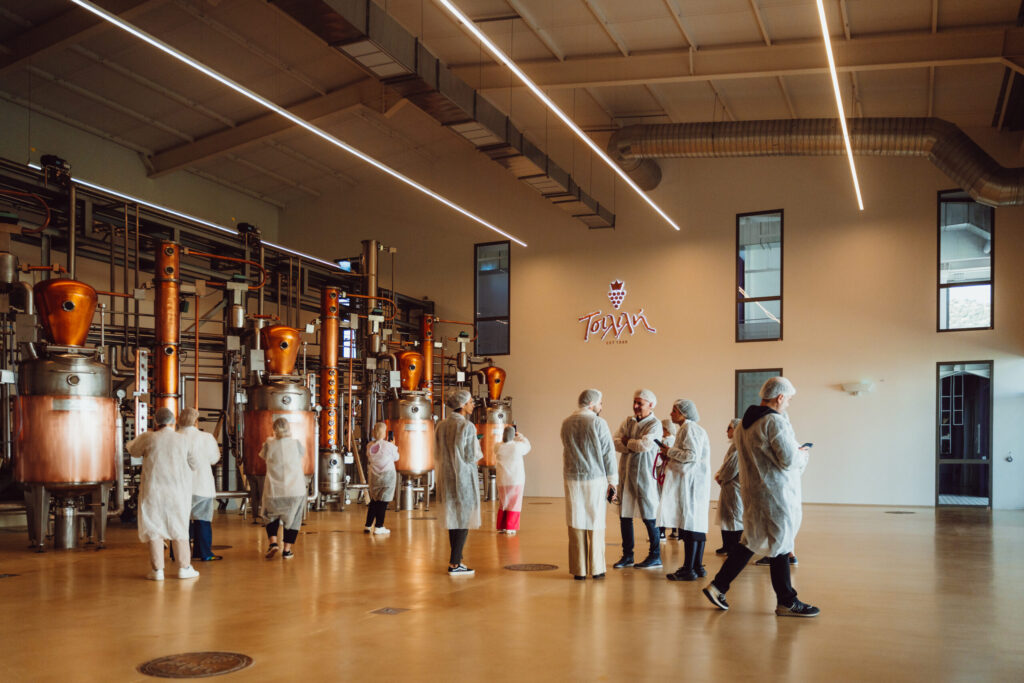
Inside the bright, modern distillery: glass, steel, copper, and the quiet perfume of fermentations. It’s early October; some plots are still being picked. Crates empty, destemmers hum, fermenters tick along. We follow the workflow in white protective aprons.
From the first bottled label in the early ’90s to today’s aged blends, the line has been constant: tradition with modern know-how. “Tsipouro became a leader because it respected itself. It didn’t imitate—it evolved.”
Distillation is batch (discontinuous)—run by run—with steam heat, in small copper-stainless stills fitted with a rectifying column for fine control of volatiles. Only the heart is kept—about 40%—where the purest, most delicate aromas live. The result is velvety texture, clarity, and length.
“The grape writes the story; we’re here to read it correctly,” Tsililis says, and among tanks and stills it feels self-evident.
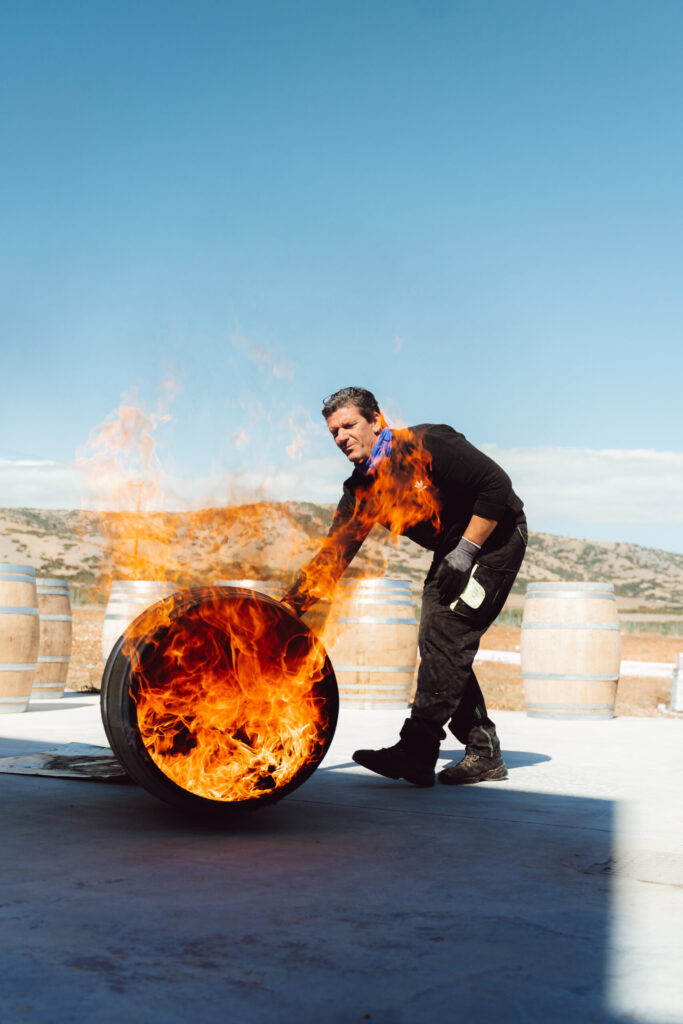
At Damasio, in the new distillery, we watched the barrel toasting—the controlled charring that prepares oak for aging. The cooper lit a flame inside the empty oak barrel and, with precise time and temperature, set the desired level of toast. The air filled with vanilla, caramel, and roasted-wood aromas; the flame “painted” grain lines and rings along the staves, and when it died down it left a warm, honeyed patina—ready to lend the tsipouro depth, gentle sweetness, and delicate spice during maturation.
Stop 3: The aging room — secrets of oak
In barrel, tsipouro changes shape: it binds with tannins and picks up spice, caramel, dried-fruit notes. The “angel’s share” evaporates; what remains gains breadth and depth.
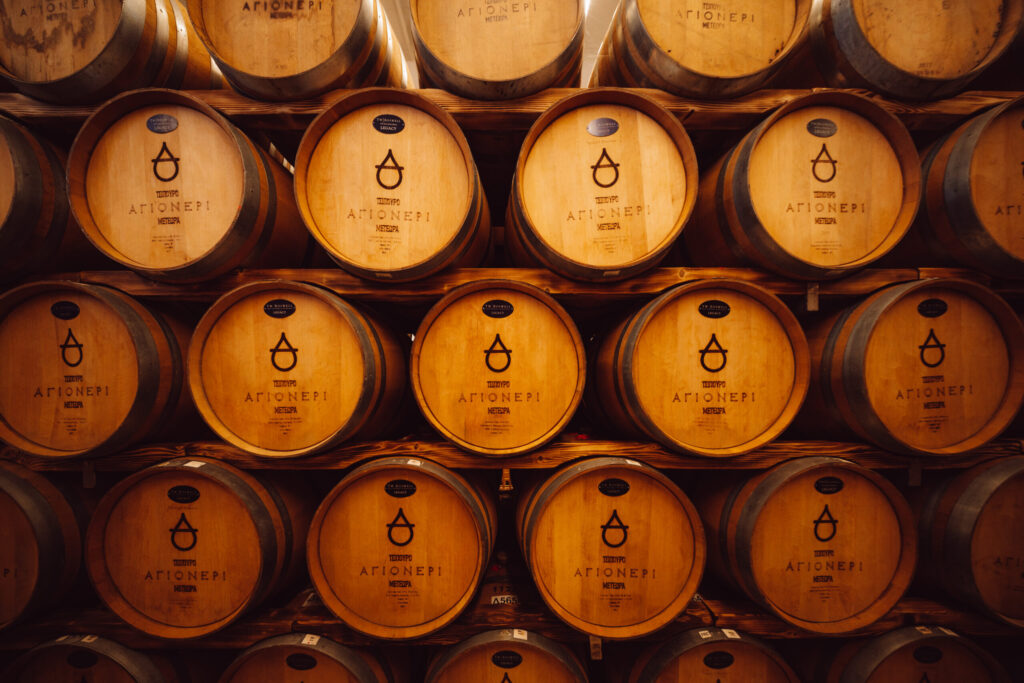
Go down a level and the noise fades. Rows of French and American oak rest under controlled temperature and humidity, holding time’s breath. Some casks once held red wine—or even Vinsanto—and lend threads of vanilla, spice, caramel, and dried fruit. “Aging is a school of patience; it gives back exactly what you give it—and the time you gift it,” says production lead Apostolis Paschalis, noting that from the 15 barrels filled in 2007, only 10 remained in 2024 after the long journey of maturation.
Stop 3: The aging room — secrets of oak
Raxa is where it all began in the late ’80s, and it’s still the heart of the visitor experience. At Tsililis HQ, beside the Theopetra Estate vineyard, you’ll find the reception area, aging rooms, and a stone-walled cellar where tastings take place. Cave-like feel, soft light, glasses filling—just the right stage to taste from the crystal-clear classic to aged Agioneri and Dark Cave.
In the glass — quick notes
Tsipouro Tsilili (classic; with or without anise)
Batch-distilled in small copper-stainless stills with steam. The non-anise version highlights clean, fruity-floral aromas; the anise version adds a spicy, herbal backbone. Crystal-clear and balanced—great with meze or Mediterranean-style cocktails.
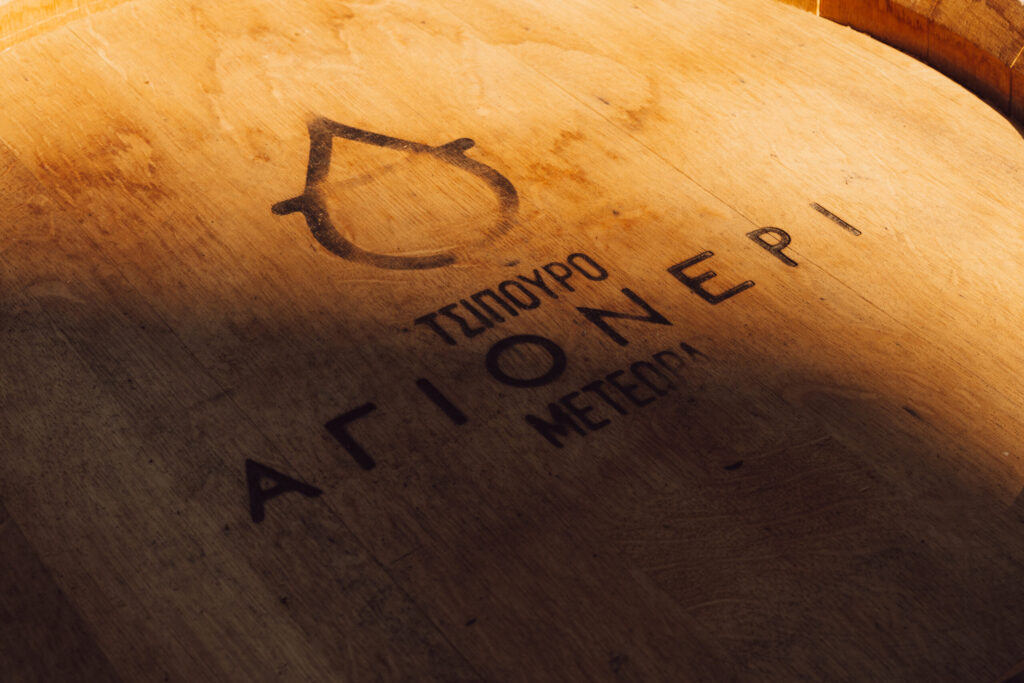
Agioneri (aged tsipouro)
Small-production, distilled in the Meteora zone and aged up to 12 months in oak; first released in 2016. Pale gold; bright citrus and blossom, hints of eucalyptus and sweet spice (nutmeg, clove). Velvety palate with a dried-fruit finish.
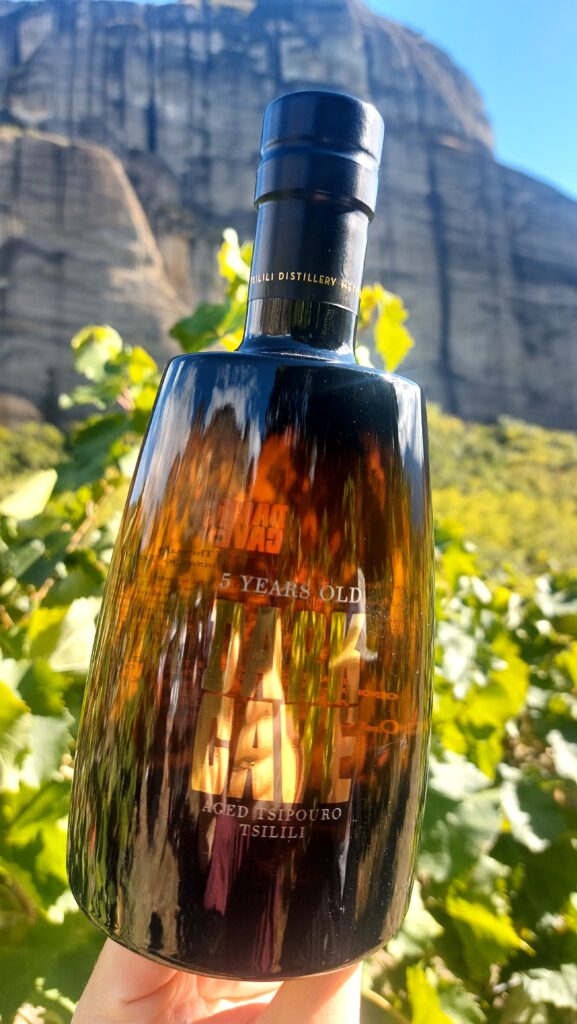
Dark Cave (aged tsipouro, 5+ & 12+ years)
The heart cut ages at least 5 years in French/American oak (some ex-red wine or ex-Vinsanto). Deep amber; aromas of raisin, damson, bergamot, vanilla, chocolate, nutmeg. Powerful yet silky, with a long, fine finish—drink neat or over a large cube. In 2024 the first 12-year release (Dark Cave Black) debuted, a lifted, elegant spirit showcasing the house’s know-how.
Tip: Base yourself in Meteora, Kalambaka, or nearby Trikala for short escapes to Elati, Pertouli, Lake Plastira, or Metsovo. Book tours/tastings in advance.

